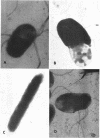Abstract
Coggin, J. H., Jr. (The University of Chicago, Chicago, Ill.), and W. R. Martin. 6-Diazo-5-oxo-l-norleucine inhibition of Escherichia coli. J. Bacteriol. 89:1348–1353. 1965.—The glutamine analogue 6-diazo-5-oxo-l-norleucine (DON) induced filaments and spheroplasts in Escherichia coli during the transition of sensitive populations to a state of resistance. Resistance developed at a frequency suggesting mutant selection. The morphology of cells resistant to 100 μg of DON per ml was indistinguishable from that of sensitive cells. DON-resistant cells exhibited an extended growth lag when cultured in the absence of the drug. This extended lag could be reduced to the lag time of parent sensitive cells by a combination of d-glucosamine and inosine or by DON. Viable counts during the lag period of resistant cells indicate that this lag results from a decrease in the number of cells during the first 2 hr of incubation. A combination of d-glucosamine and inosine was required for complete prevention of the DON inhibition of sensitive cells. The results indicate that DON not only inhibits de novo purine biosynthesis but that it also prevents hexosamine synthesis and, ultimately, cell-wall synthesis in E. coli.
Full text
PDF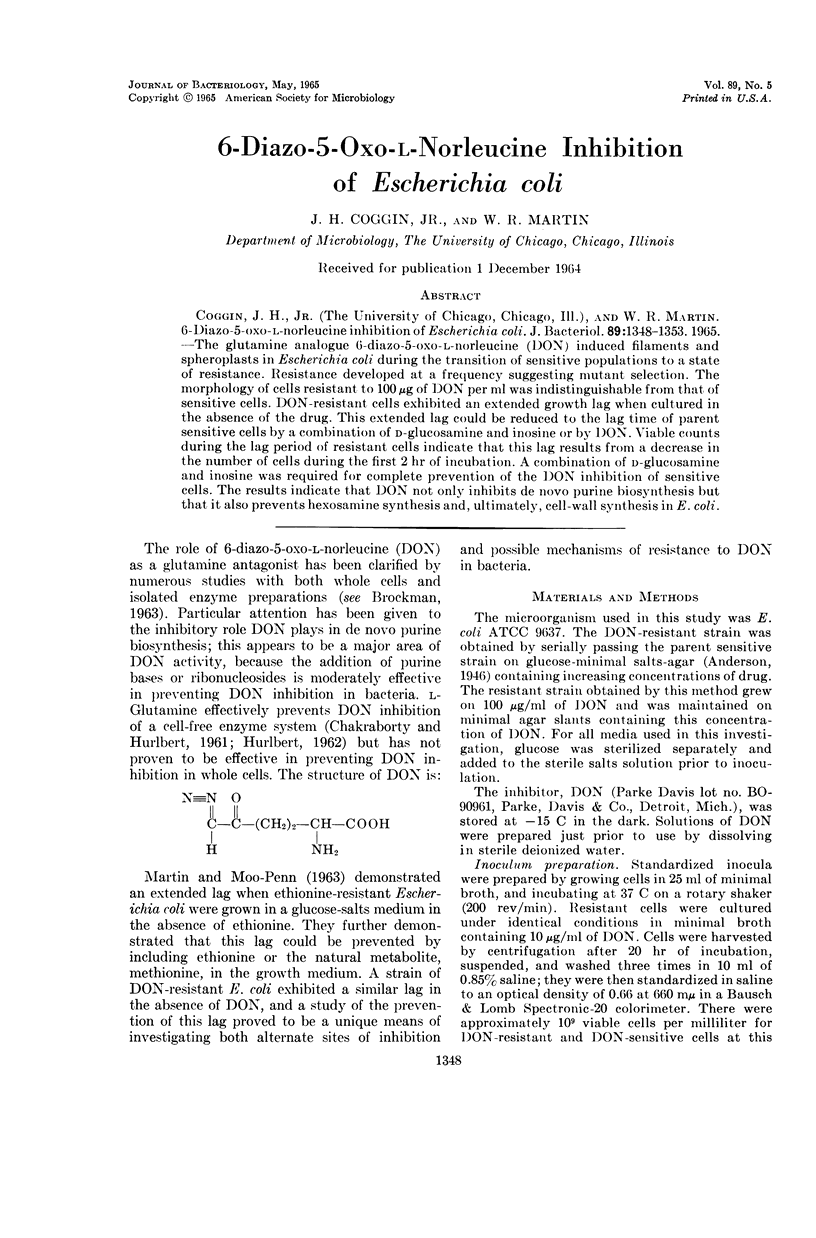
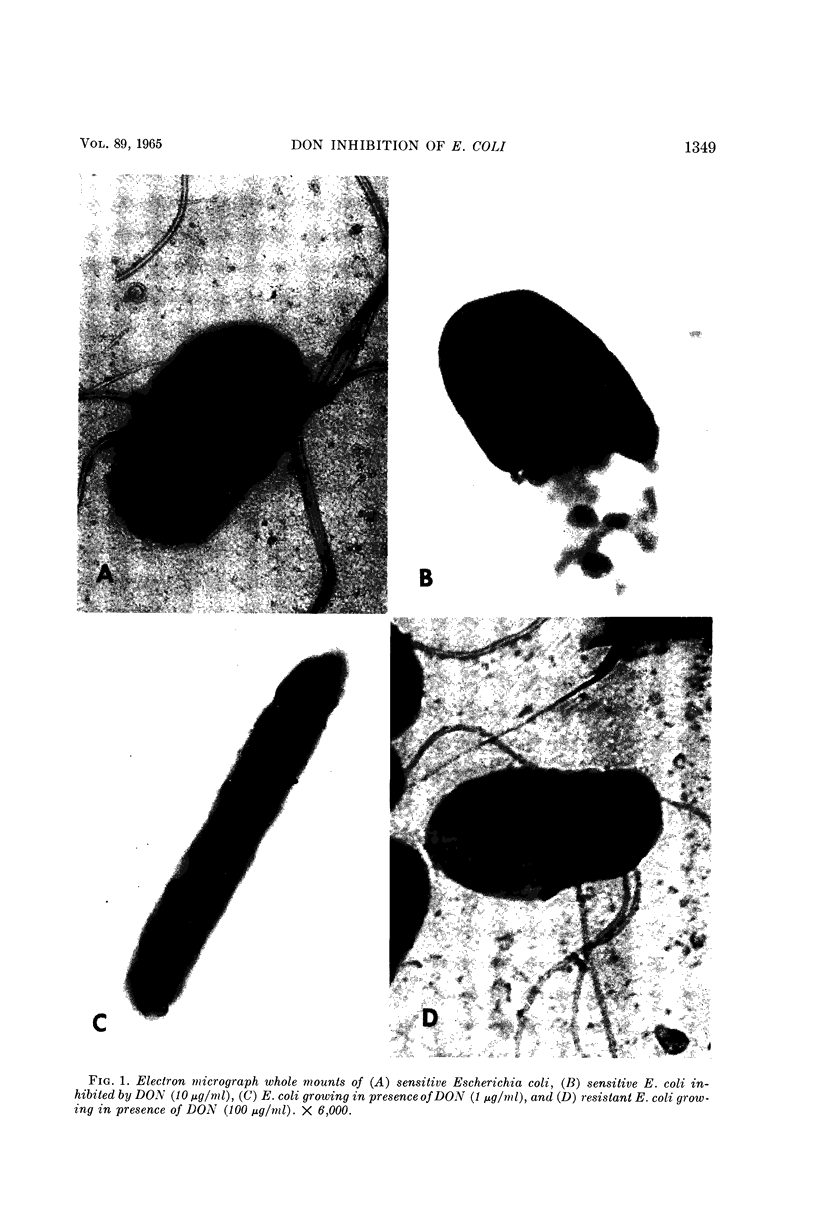
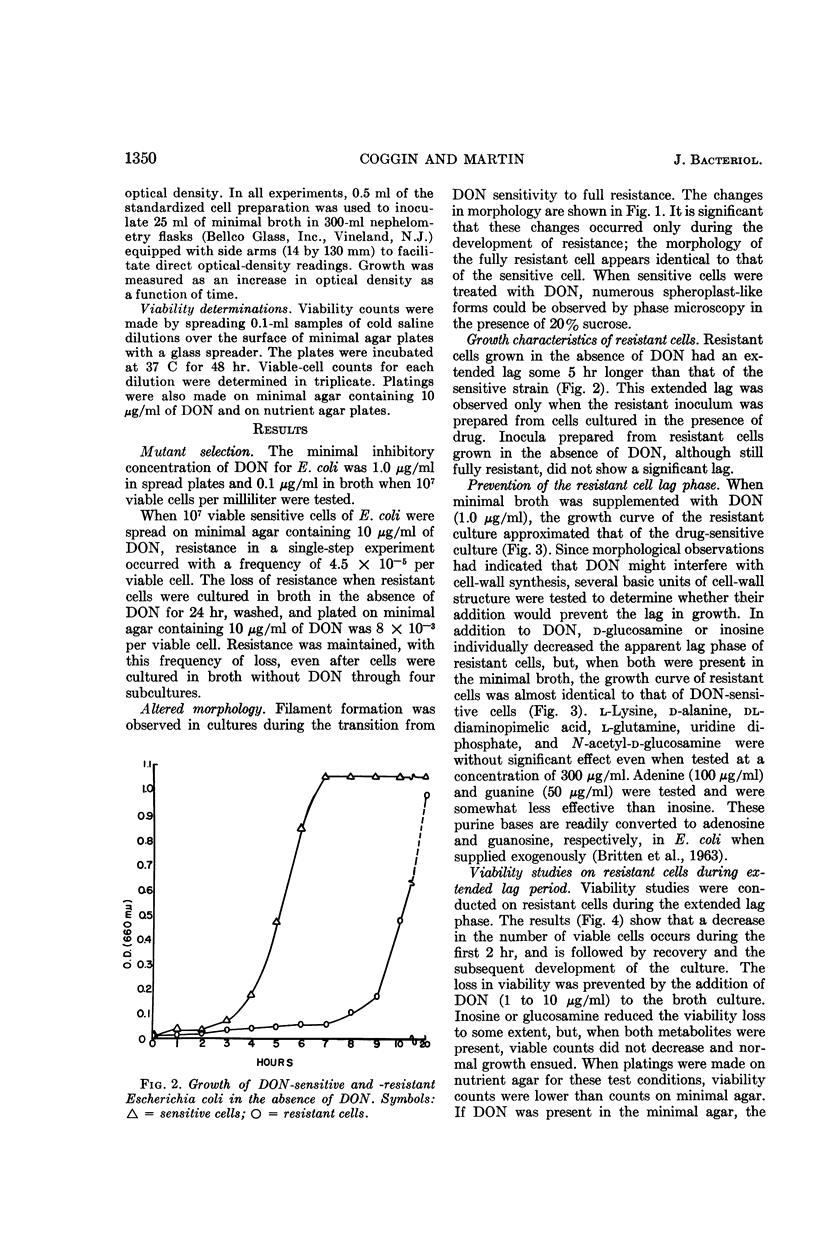
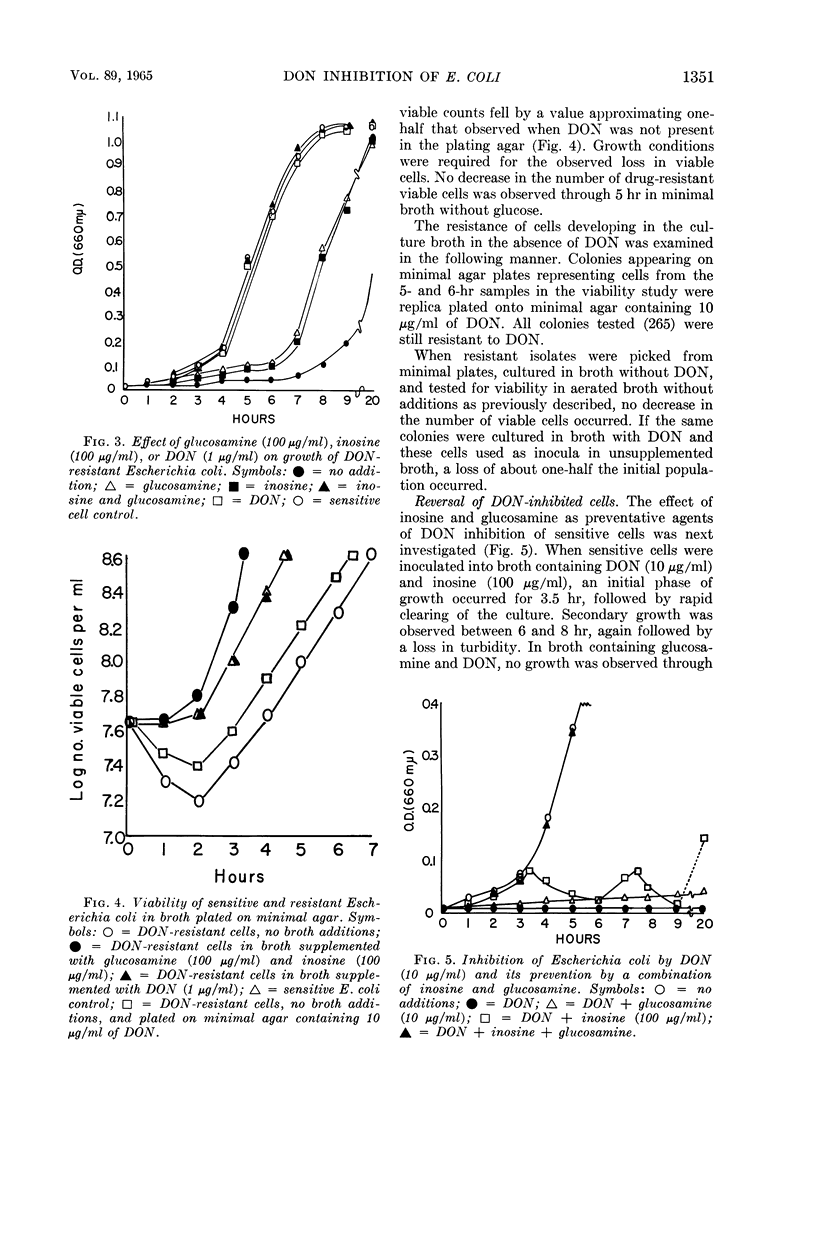
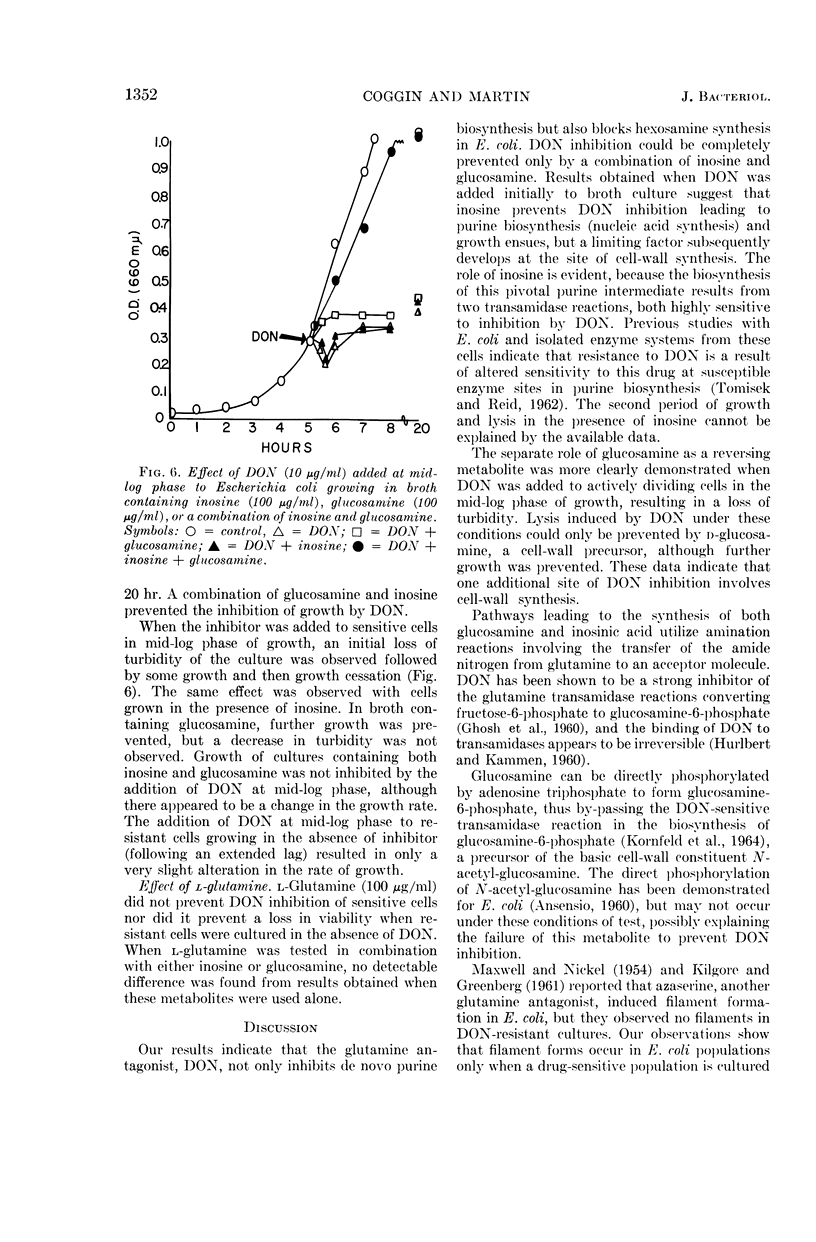
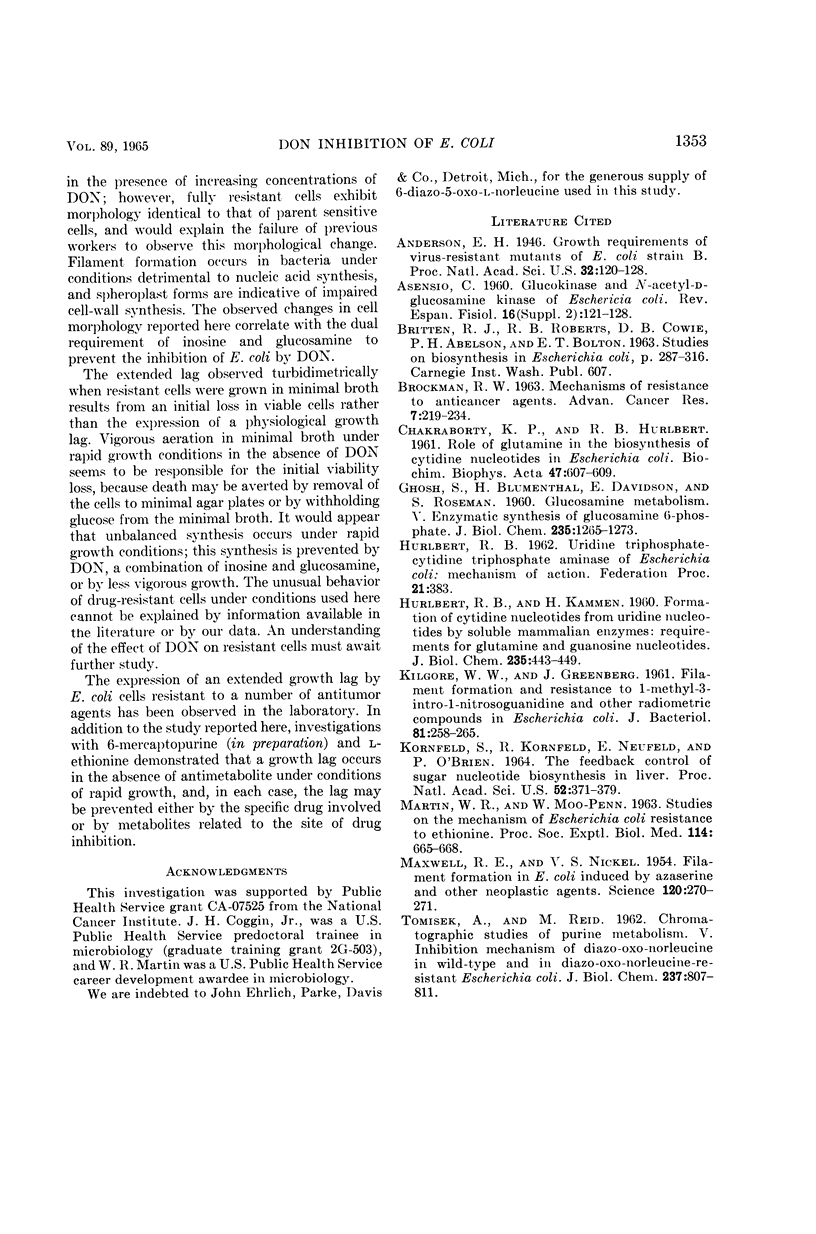
Images in this article
Selected References
These references are in PubMed. This may not be the complete list of references from this article.
- Anderson E. H. Growth Requirements of Virus-Resistant Mutants of Escherichia Coli Strain "B". Proc Natl Acad Sci U S A. 1946 May;32(5):120–128. doi: 10.1073/pnas.32.5.120. [DOI] [PMC free article] [PubMed] [Google Scholar]
- BROCKMAN R. W. MECHANISMS OF RESISTANCE TO ANTICANCER AGENTS. Adv Cancer Res. 1963;7:129–234. doi: 10.1016/s0065-230x(08)60983-5. [DOI] [PubMed] [Google Scholar]
- CHAKRABORTY K. P., HURLBERT R. B. Role of glutamine in the biosynthesis of cytidine nucleotides in Escherichia coli. Biochim Biophys Acta. 1961 Mar 4;47:607–609. doi: 10.1016/0006-3002(61)90563-7. [DOI] [PubMed] [Google Scholar]
- GHOSH S., BLUMENTHAL H. J., DAVIDSON E., ROSEMAN S. Glucosamine metabolism. V. Enzymatic synthesis of glucosamine 6-phosphate. J Biol Chem. 1960 May;235:1265–1273. [PubMed] [Google Scholar]
- KILGORE W. W., GREENBERG J. Filament formation and resistane to 1-methyl-3-nitro-1-nitrosoguanidine and other radiomimetic compounds in Escherichia coli. J Bacteriol. 1961 Feb;81:258–266. doi: 10.1128/jb.81.2.258-266.1961. [DOI] [PMC free article] [PubMed] [Google Scholar]
- KORNFELD S., KORNFELD R., NEUFELD E. F., O'BRIEN P. J. THE FEEDBACK CONTROL OF SUGAR NUCLEOTIDE BIOSYNTHESIS IN LIVER. Proc Natl Acad Sci U S A. 1964 Aug;52:371–379. doi: 10.1073/pnas.52.2.371. [DOI] [PMC free article] [PubMed] [Google Scholar]
- MARTIN W. R., MOO-PENN W. F. STUDIES ON THE MECHANISM OF ESCHERICHIA COLI RESISTANCE TO ETHIONINE. Proc Soc Exp Biol Med. 1963 Dec;114:665–668. doi: 10.3181/00379727-114-28764. [DOI] [PubMed] [Google Scholar]
- MAXWELL R. E., NICKEL V. S. Filament formation in E. coli induced by azaserine and other antineoplastic agents. Science. 1954 Aug 13;120(3111):270–271. doi: 10.1126/science.120.3111.270. [DOI] [PubMed] [Google Scholar]
- TOMISEK A. J., REID M. R. Chromatographic studies of purine metabolism. V. Inhibition mechanism of diazo-oxo-norleucine in wild-type and in diazo-oxo-norleucine-resistant Escherichia coli. J Biol Chem. 1962 Mar;237:807–811. [PubMed] [Google Scholar]



